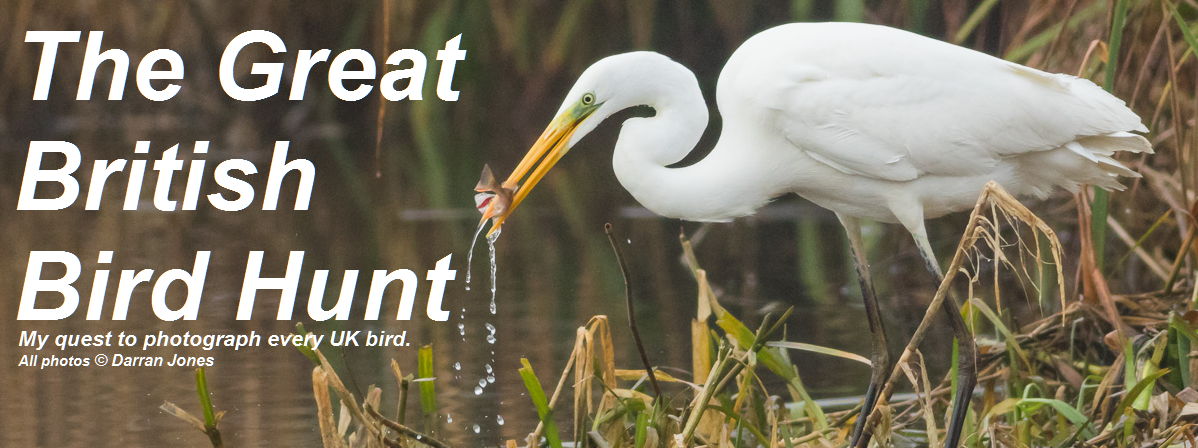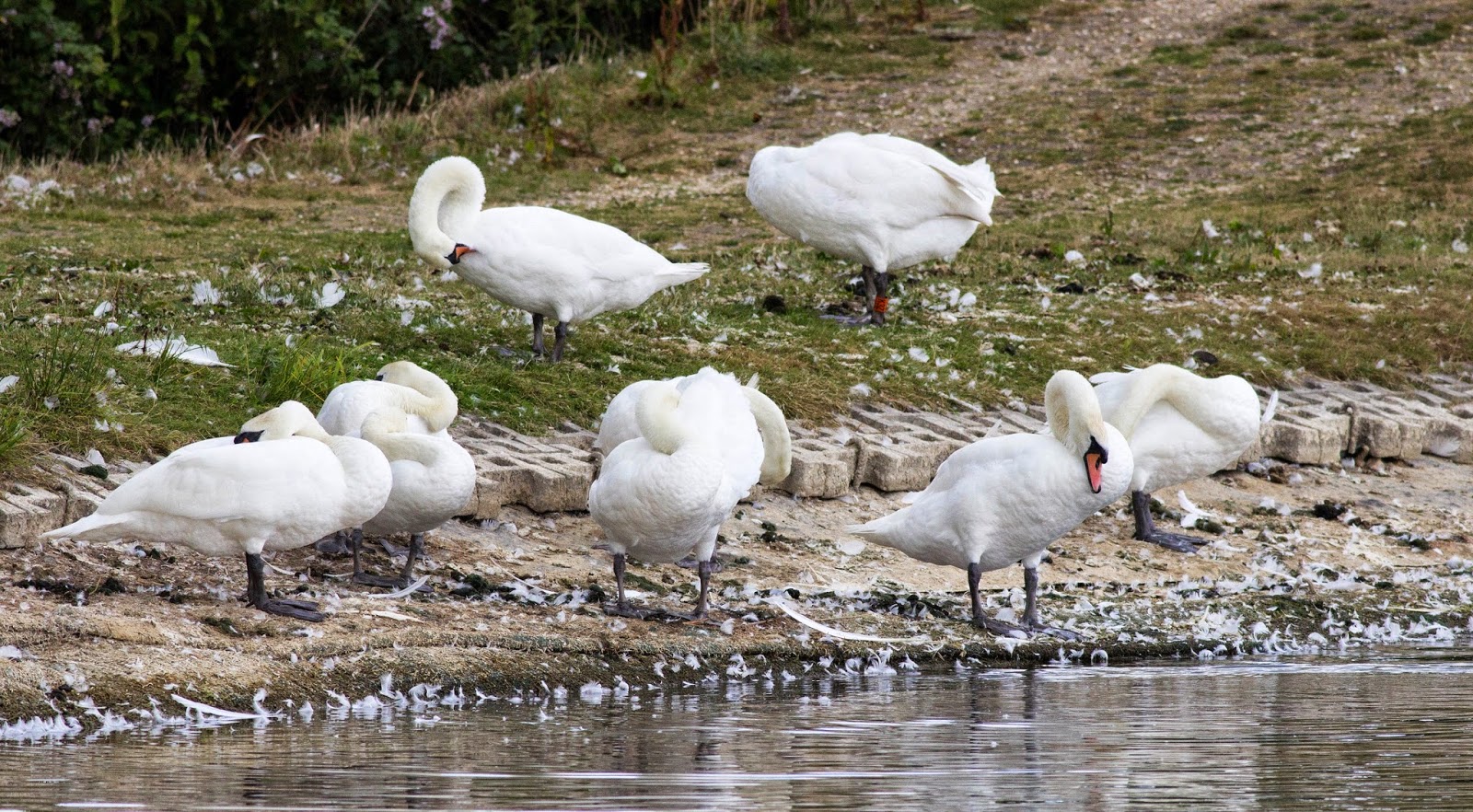While I did visit the Portland Bird Observatory, it's primarily equipped for those with long distance viewing scopes, meaning I wasn't really able to see anything. Portland is a big varied place however and I ended up spotting more than a few of our feathered friends.
Raven
As soon as we got out the car I excitedly called over to my uninterested wife to wait up. I'd seen a massive looking Carrion Crow, that seemed far too large. My immediately identified it as a Raven, as she'd seen them at the Tower Of London the previous weekend. I remained sceptical, primarily because I didn't realise they bred at Portland Bill (they do) and it was only when some smaller Carrion Crows flew by that I knew I was looking at the UK's largest crow.
It's a fantastic looking corvid with a thick, murderous looking bill and jet black plumage. It's a heavy-set crow with a great wingspan and a distinctive diamond-shaped tail in flight. There are around 7,400 breeding pairs and they are always in residence at the Tower Of London (mainly due to their wings being clipped). A great start to the weekend.
Ravens are stocky, powerful looking Corvids.
Here he is taking off.
And in flight. Hooded Crows were also around, but I didn't see any.
Razorbill
The next bird is a record shot (meaning it's good enough for identification purposes, but isn't a picture you'd proudly hang on your wall). Although I didn't see the Puffins I wanted to see, I did see a couple of Auks that were rapidly flying across the open sea. They're medium size seabirds and immediately recognisable thanks to their chunky thick-set bills that look far too large for their bodies. They spend most of their time at sea, coming on land only to breed. They're relatively common birds with around 130,000 breeding pairs in the UK. One day I'll go to the Farne Islands where it's apparently impossible to step anywhere without potentially stepping on a nesting seabird. This spot will do fine for the time being though.
Even that far out you can spot the distinctive bill.
Guillemot
Like the Razorbill, the Guillemot is another sea bird that rarely comes to land. These two were flying past shortly after I saw the Razorbill, no doubt eager to get home. They're interesting birds, because the look a little like Penguins and almost look like flying penguins in flight (if penguins could fly, they'd look like Guillemots I'm sure). Anyhoo, the Guillemot is one of our most common Auks with just under 1 million breeding pairs each year. They become harder to see outside of breeding season as they don't stick to the shore as much.
Look it's a flying penguin! Only joking.
Rock Pipit
Sometimes you become set in your ways and you don't expect to see certain birds in certain locations. While I saw plenty of Sparrows and Starlings at Portland, it was odd to see them at rock pools. At first I thought this was a Sparrow as it quickly flew past me, but I soon realised it was a completely different bird, but needed an expert to identify it for me.
It turned out to be a Rock Pipit, which can be found wherever there are rocks to clamber and search upon. This one must have had a nest nearby as it was constantly heading off to the same location with lots of food in its mouth. I resisted the urge to track its nest, content with another new bird for my list.
Little Owl
I have never seen an Owl in the wild before. Yes I've seen them in parks and zoos, but never in their natural habitat. I'd already heard about the Portland Little Owls, so when I headed to the Observatory I noticed a familiar looking set of rocks that I'd seen in a recent video. I hunkered down for a few minutes and started scouting the rocks, looking for a sign of the elusive bird. I was just about to give up, thinking I had the wrong set of rocks when I saw one eyeing me suspiciously from an outcrop.
The Little Owl is a truly astonishing little bird. It's far tinier than you'd imagine and is diurnal bird, meaning it's just as happy to be up during the day, a rarity for most UK owls. This one wasn't doing too much, being content to give me the eye and stop me from getting too close. It was good enough for me though and easily the highlight of the trip. It's always nice when you go somewhere with the specific intention of seeing something. Sadly, it's numbers are now in decline and it's thought that there are less than 6,000 breeding pairs in the UK now.
Little Owls are very hard to see.
Here's the original shot.
And one where I got a little closer.
Sky Lark
You may not have seen a Sky Lark, but you'll certainly have heard one if you walk through open pasture. They have gorgeous lilting songs that trill for an age and are joyful to listen to. Sadly, these delightful birds are becoming rarer and rarer, meaning seeing one at Portland was a fantastic surprise. They're fairly big birds, being somewhere between the size of a Sparrow and Starling, and have raised crests when they are excited. I spotted one upon leaving the observatory but it wasn't the best of shots.
I carried on down the path though as I could here more than one singing. Thinking that there were possibly nest about my attention was drawn towards two which were cartwheeling through the air in some sort of courtship. I sadly missed the display and started to head back to the car, only to be treated with the following sight.
Note the white on the edge of the tail. Cracking looking bird.
Dunlin
We now decided to head home, as the weather was starting to turn and the wife had been unable to visit the light house. Alice mentioned she wanted to go to Chesil Beach, so we braved the pebbles and had a look around. It turned out to be a great location for waders and I saw two there. The first were Dunlins, which were incredibly fast moving birds and one of our commonest waders. There were around 20 birds in total, running around with the tide and looking for tasty treats. I thought I saw some rarer Knots along with them, but it was just juveniles. Oh well, there's always next time.
Some of the Dunlins I saw. Note the black breast.
A close up of a pair.
Ringed Plover
At first I was hoping this was the rarer Little Ringed Plover, but it's orange bill is an obvious clue. There were quite a few of them combing the beach, but in true oblivious fashion I didn't notice this until much later. Instead I was focused on this one as it stood around, turned over small stones and generally sweeped the beach for as much food as possible. If a nest is spotted by a predator the adults will feign a broken wing in an attempt to keep it away. Delightful little birds that were extremely pleasant to watch.
The black tip indicates this is not a Little Ringed Plover.
A group including some juveniles.
Lesser Black-Backed Gull
On the way home we decided to have a quick stop off at Radipole Lake. The wife likes it there because it has a comfy visitor's centre where she can sit down and enjoy a hot coffer. Anyway, I got talking to the always friendly staff who enquired about what I had seen and what I was still looking for. I mentioned that I was missing a Lesser Black-Backed Gull, so they immediately pointed out a juvenile for me. Gulls are notoriously difficult to tell apart, so I'm grateful for the pointers, as I would have had it down as just another Herring Gull. It's actually slightly smaller than a Herring Gull, with a darker grey back. You wouldn't know that from looking at this fellow mind!
Common Sandpiper
The Wardens were also happy to point out a few Common Sandpipers that were joining the other birds. While they spent most of their time roosting, they would rapidly fly around the lake. They're tiny sandpipers, and nowhere near as common as their name suggests with just 15,000 breeding pairs.
Flying.
Feeding near some Tufted Ducks.
A comparison shot with a Grey Heron.
Not content with seeing 10 birds on Saturday, I headed off to Longham Lakes the following day. It's two big water reservoirs that have been turned into bird sanctuaries and there have been over 140 species spotted there. I've never heard of it before, despite the fact it's on my doorstep, but will be visiting it a lot more often going forward.
Lapwing
I've seen Lapwings before, but this is the first time I've taken a photo of one (another record shot sadly). My tripod is quite frankly rubbish, so I'm going to have to invest in a decent one that doesn't shake as much. The shots are a little blurred, but you can still make out the bird.
Often known as the Peewit due to its distinctive call, it's numbers have now significantly declined, meaning it's on the RSPB's red list. Much of the land it prefers simply isn't around any more due to new agricultural trends, meaning it's getting harder and harder to see. No wonder these two were quite happy in the middle of the lake!
Not the greatest shot but it will do for the moment.
Reed Warbler
This was an absolute nightmare to get. Reed Warblers are painfully shy birds that love the cover of the reeds found around both lakes at Longham. While this is great for their protection, it makes it very hard to get great shots as the camera typically focuses on a reed and the bird is out of focus. While this one was in focus, it was in dense reeds, making it quite hard to see. Luckily its song helped be identify it.
So all in all I've had a pretty fantastic week end. A good range of birds, as well as two new locations which I'll be visiting in the coming weeks. I saw plenty of other birds, so enjoy the following shots.
I've now seen 82 birds, leaving 190 birds left to find.
Common Tern at Radipole.
And this one was at Longham.
A Cormorant shocks a nearby gull.
Whilst another has a good old preen.
A female Reed Bunting hides at Longham Lakes.
A Goldfinch at Portland Bill.
And another at the observatory.
A Great Black-Backed Gull scavenges a washed up fish.
And here's a very cold Great Crested Grebe at Longham.
Wood pigeons woo each other.
A Tufted Duck has a wash.
A pair of Little Egrets at Radipole.
A Rook scavenging on Chesil Beach.
More preening. This time a Grey Heron.
A Pied Wagtail looks guard.
Whilst its youngster has a rest.
A Kestrel hunting at Portland.
But it didn't catch anything.
A Herring Gull does get a prize though.
Mute Swans resting at Longham.
A Grey Heron upsets some nearby gulls.
A slightly fuzzy Linnet.
More Little Egrets.
More Herring Gulls (or possible a Lesser Black Backed Gull).
Little Egret and unimpressed Cormorant.
Flying Magpie.
Mallards at Longham.







.jpg)
.JPG)







.jpg)

















.jpg)




.jpg)
.jpg)
.jpg)




.jpg)



No comments:
Post a Comment